Kingdom of birds and sea lions - El reino de aves y lobos marinos
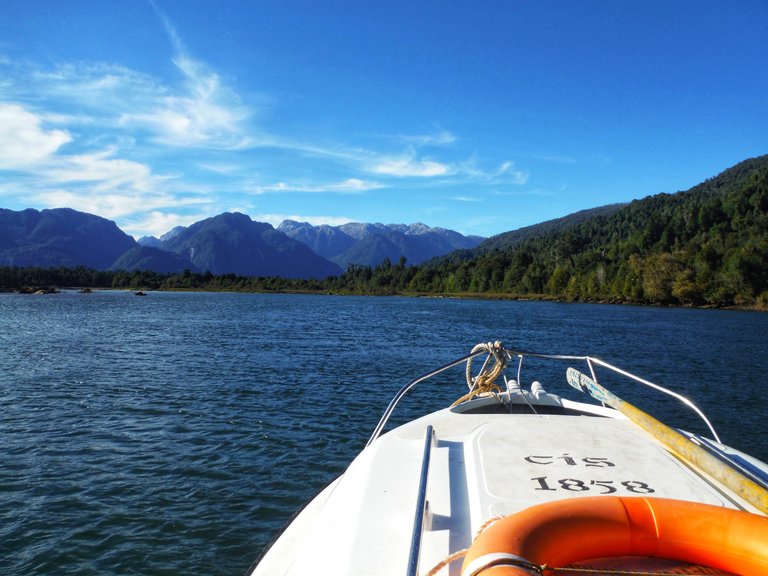
Sailing through the Chilean fjords is an amazing experience.
The exuberant flora frames islands and coasts, different species of trees and shades of green, high snowy mountains; an indescribable landscape and, as if that were not enough, the birds and sea lions appropriate each projection, each islet, each available place, however small it may seem, to form noisy, fighting and suspicious families.
Approaching these islets to observe and portray wildlife is a complex task, even a little risky; the water churns and the waves splash everywhere, they are unmistakable signs of the presence of submerged rocks capable of breaking the fragile fiberglass structure of our boat.

The noise of the powerful motor frightens huge Pacific salmon that jump wildly and other small fish as well, it is just the opportunity for white-breasted cormorants to take flight and dive headlong into the water to try to catch their prey.
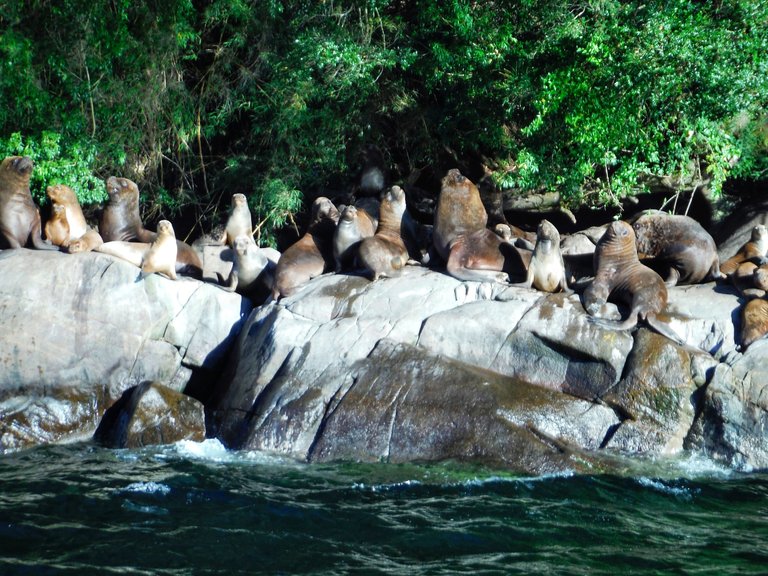
Sea lions are also scared and a large number of young and their mothers launch into the cold waters in search of refuge, the dominant male haughty and some other smaller who secretly aspires to replace him when their forces dwindle, resist leaving the rocks, more out of pride than out of conviction. Finally, fear overcomes their vanity and they too plunge into the water between the rounded stones of the islet.
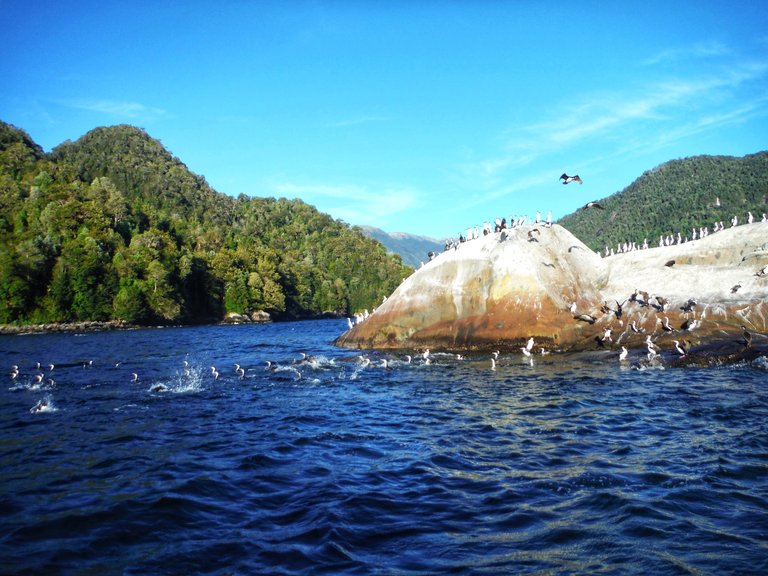
After observing for a long time, after taking photographs and videos, we decided to retire, leaving them in peace and harmony with nature and with their way of life, we left and out of the corner of our eyes we saw how everyone slowly returned to their places, all except the great male sea lion, the lord and master of the rock, we will be left unknown to know how such a mass of fat and muscles can climb to that high place.
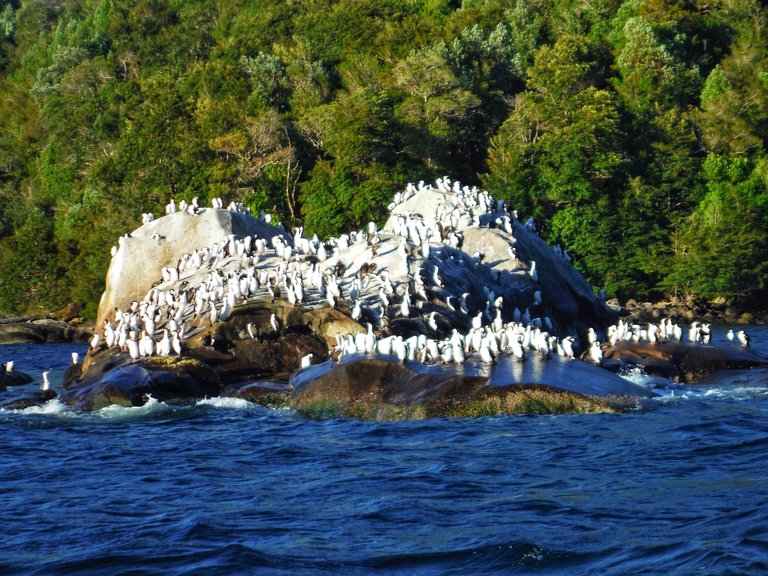
The cormorants, petrels and seagulls continue for a while to circle around us and their islets, finally they will also perch on the stones bleached by their own guano, everything returns to normal until the next tourist boat approaches to observe their lives and bother them for a few minutes, as we did.
Navegar por los fiordos chilenos es una experiencia alucinante.
La flora exuberante enmarca islas y costas, diferentes especies de árboles y tonalidades de verdes, altas montañas nevadas; un paisaje indescriptible y como si fuera poco las aves y los lobos marinos se apropian de cada saliente, de cada islote, de cada lugar disponible, por más pequeño que parezca, para formar familias ruidosas, peleadoras y desconfiadas.
Acercarse a estos islotes para observar y retratar la fauna silvestre es una tarea compleja, hasta un poco arriesgada; el agua se agita y las olas salpican hacia todas partes, son señales inequívocas de la presencia de rocas sumergidas capaces de romper la frágil estructura de fibra de vidrio de nuestra embarcación.
El ruido del potente motor asusta a enormes salmones del pacífico que saltan descontroladamente y también a otros pequeños peces, es la oportunidad justa para que los cormoranes de pecho blanco levanten vuelo y se lancen al agua en picada y de cabeza para intentar atrapar a sus presas.
Los lobos marinos también se asustan y la gran cantidad de crías y sus madres se lanzan a las frías aguas en busca de refugio, el altanero macho dominante y algún otro más pequeño que aspira secretamente a reemplazarlo cuando sus fuerzas mengüen, se resisten a abandonar las rocas, más por orgullo que por convicción. Finalmente el miedo puede más que su vanidad y también ellos se zambullen en el agua entre las redondeadas piedras del islote.
Luego de observar por un largo rato, luego de tomar fotografías y vídeos decidimos retirarnos, dejarlos en paz y armonía con la naturaleza y con su forma de vida, nos vamos y de reojo vemos como todos vuelven lentamente a ocupar sus lugares, todos menos el gran lobo marino macho, el amo y señor de la roca, nos quedará la incógnita de saber cómo semejante mole de grasa y músculos puede subir hasta ese alto lugar.
Los cormoranes, petreles y gaviotas continúan por un tiempo más dando vueltas alrededor nuestro y de sus islotes, finalmente ellos también volverán a posarse en las piedras blanqueadas por su propio guano, todo vuelve a la normalidad, hasta que la siguiente lancha de turistas se acerque para observar sus vidas y los moleste por unos minutos, como lo hicimos nosotros.
Las fotografías son de mi propiedad
The photos are my property
Héctor Gugliermo
@hosgug
Hola @hosgug, excelentes imágenes , gracias por compartirlas realmente toda una odisea para obtenerlas, pero valió la pena.
Hola @janettyanez, en realidad no fue una odisea porque mirá quien manejaba la lancha....
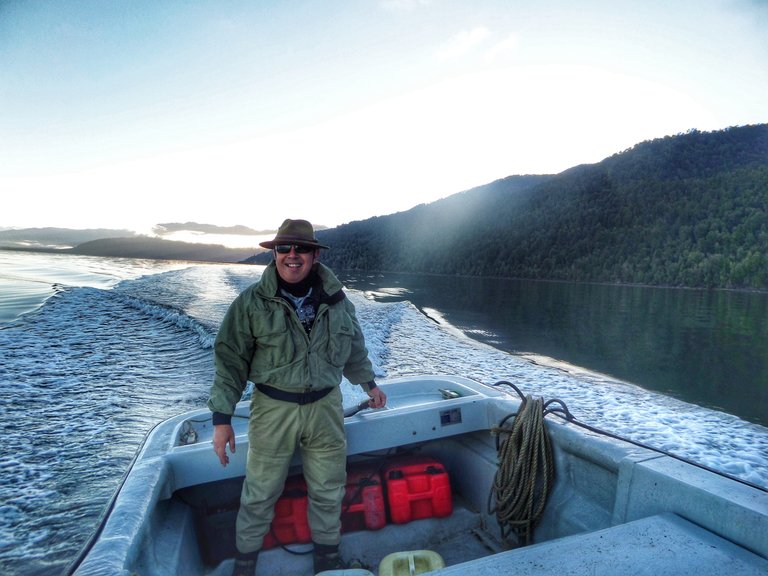
Bueno, en realidad no era yo, el guía me la prestó un rato solo para la foto.
jajaja, menos mal (risas), excelente amigo @hosgug
Que paisajes tan lindos! nunca imaginé que la cosa tuviese tanta vegetación.
Se ve que los pingüinos se asustaron con la lancha porque terminaron prácticamente todos en el l agua..
Gran abrazo
Gracias @pablo1601.
Pero no son pingüinos, son cormoranes, petreles y gaviotas. jajaja
Abrazo!
De la parte sur de Chile conozco la isla de Chiloé, allí donde Charles Darwin descubrió la especie de zorro que lleva su nombre.
Excelente info y fotos @hosgug.
Saludos.
Muchas gracias @argenvista, esto es un poco más al sur, frente al parque nacional Isla Magdalena. Pasamos unos días pescando en Puerto Cisnes.